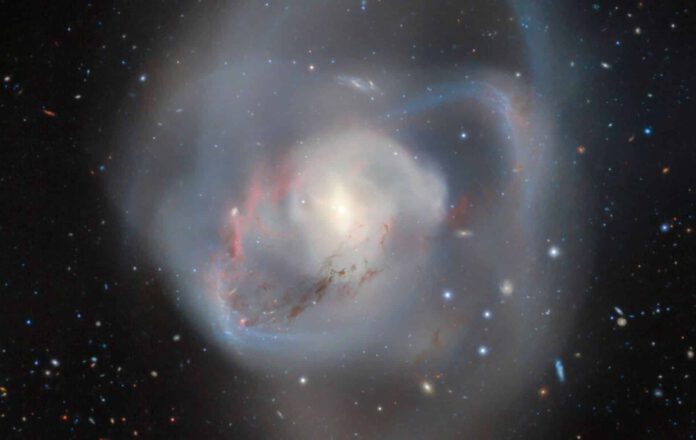
Galactic Collision Creates ‘Cotton Candy’ Mess
Contrary to its sweet name, the ‘cotton candy’ of space is in reality an embodiment of utter chaos that ensued from a clash between two galaxies.
Origins of the Chaos
Originally, in the place of the present cotton candy, a spiral galaxy with well-defined spiral arms existed. However, a collision and subsequent fusion with another galaxy plunged the well-organized galaxy into complete chaos, causing it to now resemble disordered cotton candy.
Dust, Gas and Black Holes
The outer edges of this cosmic cotton candy consist of interstellar dust and gas. Within this, we find the still merging cores of what were once two separate galaxies. At their heart are two supermassive black holes – one that is believed to be 154 million times more massive than our sun, and the other weighing in at around 6.3 million solar masses.
Another Fusion Ahead
These black holes, each once commanding the center of their respective galaxies, are now – post-collision and fusion of their galaxies – obliged to coexist. However, this cohabitation is not comfortable yet; the black holes are still some 1,600 light years apart. They are expected to keep moving closer to each other and eventually – in about 250 million years – collide and merge into a single, even heavier black hole.
Tumultuous Collision
Despite the tranquil look of the cosmic cotton candy, the collision that led to its formation was anything but peaceful. Stars and nebulae were thrown away and then – drawn by the gravity of the supermassive black holes – sucked back in.
Young Stars
The violent collision resulted not only in disorder. Clashing gas clouds also created the perfect environment for star formation. In fact, many bright, newly born stars are visible inside segments of the cotton candy. At 23 spots, the rate of star birth is so high that researchers suspect that spherical star clusters – enormous collections of stars, sometimes counting up to hundreds of thousands – are forming.
However, all things must end, and therefore, this galactic chaos and star formation will also cease eventually. The expectation is that the existing cotton candy structure will eventually transform into an elliptical galaxy, consisting mostly of older stars, with very little new star formation.
Implications to Our Milky Way
This celestial spectacle, that occurred roughly 1 billion years ago is quite far removed in both time and space, around 90 million light years away from our Milky Way. Yet, it holds implications for our galaxy as well. In billions of years, our spiral galaxy is expected to collide and fuse with a neighboring galaxy – Andromeda. This cosmic cotton candy, therefore, offers us a glimpse into the possible future of our galaxy.











